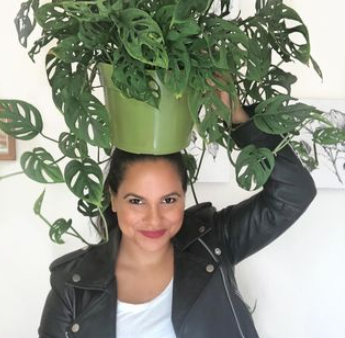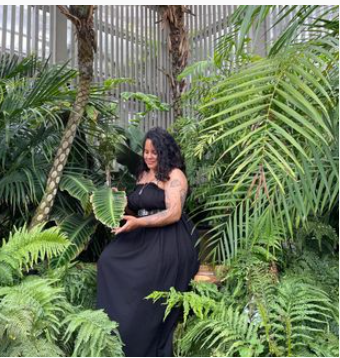
Succulents are not just plants; they're living pieces of art that can thrive with the right care and attention. If you're a succulent enthusiast, you've come to the right place! In this comprehensive guide, we'll cover everything you need to know about succulent care from a horticulture professional with over 10 years of experience. Succulents were the first category I managed when I joined the operations team while I was working for a very large and well-known commercial grower in the US.
Whether you're a seasoned succulent grower or a beginner, these tips will help you keep your succulents healthy and vibrant. Let's dive in!
The Origins of Succulents
Succulents have ancient origins dating back to a time when Earth's climate was vastly different from what we know today. These hardy plants evolved in regions characterized by extended dry periods, fierce sun, and limited water resources. Succulents stand out as remarkable survivors of arid landscapes. Their ability to thrive in regions where rain is scarce and drought is a common occurrence is a testament to their remarkable adaptation over millions of years.
Unique Characteristics & Water Storing Adaptation
To care for succulents effectively, it's crucial to understand their unique characteristics. One of the most distinctive features of succulents is their capacity to store water. Over time, these plants have developed specialized structures for water storage, such as thick, fleshy leaves, stems, or roots. These adaptations allow succulents to store water during rainy seasons and rely on these reserves during prolonged periods of drought.
Reduced Leaf Surface Area
Succulents have reduced the size of their leaves or even evolved into spine-like structures to minimize water loss through transpiration. This adaptation allows them to conserve water efficiently in dry climates.
Shallow Roots and Efficient Water Uptake
Succulents often have shallow root systems that can quickly absorb moisture from even the lightest rain or dew. Their roots are designed to take advantage of sporadic rainfall, making the most of every drop.
CAM Photosynthesis
Many succulents employ Crassulacean Acid Metabolism (CAM) photosynthesis, a unique adaptation that enables them to open their stomata and perform photosynthesis at night when temperatures are cooler and moisture loss is minimized. This efficient use of water sets succulents apart from many other plants.
Succulent Care Tips 101

Light: Succulents need plenty of sunlight. Place them where they can receive at least 6 hours of indirect sunlight per day. South or west-facing windows are ideal. Do not place them in a dark or humid bathroom. If your succulent is not getting enough direct light it will become elongated or leggy and will turn towards the light (phototropism). Therefore, we recommend rotating your succulents.
Watering: Overwatering is one of the most common mistakes in succulent care. Allow the soil to dry out completely between waterings. Water sparingly, usually once every 2-4 weeks, depending on your environment and the container size. Water thoroughly when you do, making sure the water drains out of the bottom of the pot if it's not in an arrangement. Make sure you water the soil, not the leaves or crown as this could lead to root rot.
Pot and Soil: Use a well-draining soil mix specifically designed for succulents and cacti. Ensure the pot has drainage holes to prevent water from accumulating at the bottom, which can lead to root rot. If your arrangement doesn't have holes water lightly, remember Succulents absorb moisture from even the slightest bit of water.
Temperature and Humidity: Succulents generally prefer temperatures between 60-80°F (15-27°C). They can tolerate lower temperatures but should be protected from frost. Succulents are adapted to low humidity, so they are suitable for dry indoor environments.
Fertilizing: Fertilize sparingly during the growing season (spring and summer) with a balanced, diluted fertilizer. Avoid fertilizing during the dormant season (fall and winter).
Pruning and Maintenance: Remove dead or yellowing leaves to promote new growth. Some succulents may need occasional shaping or thinning. Usually, you will need to remove dry leaves from the lower crown to keep your plants looking fresh. I use a tweezer to make this easier.
Pests and Diseases: Look for common pests like mealybugs and spider mites. Treat infestations promptly with insecticidal soap or neem oil (avoid if plant is in direct sun). Avoid overwatering to prevent root rot and fungal issues.
Container Selection: Choose pots that allow for growth as succulents can become root-bound. Transplant them into larger pots when they outgrow their current container.
Propagation: Many succulents can be propagated from leaves or stem cuttings. This is a fun way to create new plants.
Seasonal Changes: Some succulents may go through a dormant period, during which they require less water and sunlight. Adjust your care routine accordingly.
Succulent Flowering and Changing Colors
Not all succulents are equal when it comes to flowering. Some species are more prone to blooming than others. If you're specifically interested in enjoying the blossoms, consider succulents like Echeveria, Kalanchoe, and Sedum, which are known for their impressive flowers.
Succulents require plenty of sunlight to thrive and eventually bloom. Succulents generally prefer warm temperatures, but many of them require a period of cooler temperatures to initiate flowering. Mimicking their natural environment is key. During the spring and early summer, when many succulents typically bloom, ensure the temperature remains between 60°F to 80°F (15°C to 27°C). Avoid extreme temperature fluctuations that can stress the plant.
Succulents can indeed change color in response to various environmental factors, including heat, cold, and stress. This color change is often a protective mechanism and can vary depending on the specific succulent species. Here's some information to help you understand why succulents may turn red or change color due to these factors:
Heat Stress: When exposed to intense sunlight or high temperatures, some succulents may develop red or purple hues as a natural response to protect themselves from excess sun exposure. This coloration is often caused by the production of pigments like anthocyanins.
Cold Stress: Cold temperatures can also affect succulent coloration. Some succulents may turn red or purple when exposed to cold conditions, which is thought to be a way to absorb more sunlight and warmth. This can be especially noticeable during cooler seasons.
Stress: Stress factors such as insufficient water, physical damage, or environmental changes can lead to color changes in succulents. Stress often triggers the production of protective pigments, leading to red or other color variations.
It's important to note that not all succulents will respond the same way to these stressors, and the degree of color change can vary between species. Some common succulents known for changing color under stress include Kalanchoe Echeveria and Sedum.
Succulents Fun Facts:
All cacti are succulents, but not all succulents are cacti.
The Roman Emperor Charlemagne made everyone grow succulents on their roof because it was believed to bring prosperity and keep you safe. The species Sempervivum tectorum means 'always alive on the roof.'
Jade is a symbol of good luck and wealth in some Asian traditions and is also known as The Money Tree.










































